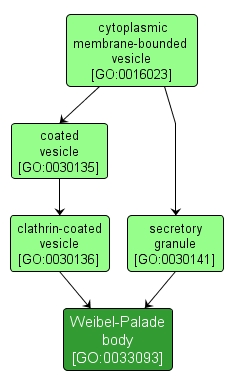| Desc: |
A large, elongated, rod-shaped secretory granule characteristic of vascular endothelial cells that contain a number of structurally and functionally distinct proteins, of which the best characterized are von Willebrand factor (VWF) and P-selectin. Weibel-Palade bodies are formed from the trans-Golgi network in a process that depends on VWF, which is densely packed in a highly organized manner, and on coat proteins that remain associated with the granules. Upon cell stimulation, regulated exocytosis releases the contained proteins to the cell surface, where they act in the recruitment of platelets and leukocytes and in inflammatory and vasoactive responses. |














